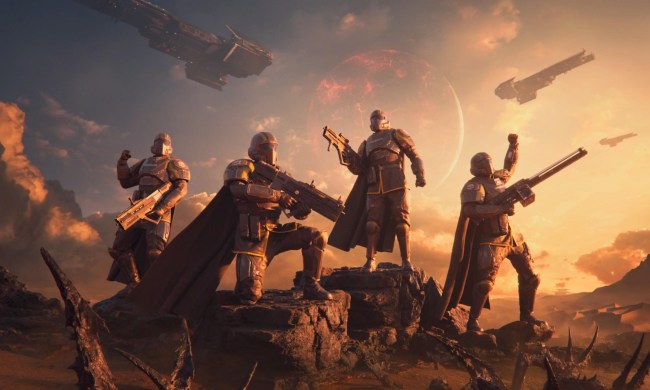
Choosing between PC and console just got a little trickier because a feature that was previously reserved for PCs is now available on the Xbox Series S/X and PlayStation 5. The feature in question? Frame generation, courtesy of AMD’s FidelityFX Super Resolution (FSR) 3. The tech did a superb job in the first tests on Xbox Series X, resulting in an up to 72% performance uplift in Immortals of Aveum. While this is a big step for AMD, and for console gaming as a whole, there are some downsides that underscore how this tech is still in its early days on consoles.
Upon the announcement that FSR 3 was now supported on all platforms as of the latest patch in Immortals of Aveum, Digital Foundry took the game out for a spin on an Xbox Series X, sharing its experience. The game, which normally tends to run at around 30 frames per second (fps) to 60 fps on the Xbox, saw a significant increase in frame rates, moving up from an average of 46 fps to 80 fps — a 72% increase.
As Digital Foundry testers explained, this took Immortals of Aveum from a fairly inconsistent 40 fps to 60 fps game to something that runs at a stable higher refresh rate. Digital Foundry’s John Linneman noted that the title almost feels like a 120-fps game, which is quite an achievement for an Unreal Engine 5 title on the Xbox.
In Immortals of Aveum, gamers can choose to toggle frame generation on or off, and variable refresh rates (VRR) are also available. Unfortunately, the experience, while overall much smoother, was not without some visual artifacts and freezing issues. The video describes moments when the fps suddenly drops to 0, the camera cuts during cinematics (which, curiously, doesn’t seem to affect the PS5), and the frame stutters.
Perhaps the most annoying problems lie in the game’s HUD. Various 2D elements are not interpolated and not affected by frame generation, which means that there’s sometimes a visibly much lower frame rate in certain parts of the screen. It almost feels like a part of the game is lagging while the rest runs smoothly.

Upscaling and frame generation technologies, such as Nvidia’s Deep Learning Super Sampling (DLSS) and AMD’s FSR, have been all the rage in the PC gaming world over the past few years — and no wonder. DLSS 3 gets the best rep, with its capability to turn a midrange GPU into a competitor to one of the best graphics cards, as well as its increasing availability in games. Meanwhile, the adoption of FSR 3 has been pretty slow, with only 26 supported titles right now, which is why it’s a promising thing for AMD to break new ground by bringing frame generation to consoles. This is one field where Nvidia can’t hope to compete, as DLSS 3 is only available on RTX 40-series GPUs, while FSR 3 is supported by GPUs from all vendors. It just so happens that both the Xbox and the PlayStation run on AMD hardware.
While imperfect, this is a huge step for console gaming. It’s too early to tell how long it’ll take for another console title to embrace FSR 3. It might take some time, and longer still for it to become widespread. However, this proof of concept shows us that a few years from now, frame generation might no longer be such a huge factor in choosing to buy a PC instead of a console.




